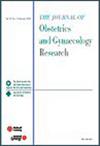The correlation between uric acid to high-density lipoprotein cholesterol ratio and the prevalence of female infertility
Abstract
Aim
The relationship between uric acid to high-density lipoprotein (HDL) cholesterol ratio (UHR) and female infertility remains unclear. The aim of our study was to explore the correlation between UHR and fertility in US adults.
Methods
Data from the National Health and Nutrition Examination Survey from 2013 to 2018 was analyzed in this study. UHR was considered the independent variable, and female infertility was the dependent variable. Multivariable logistic regression and smooth curve fitting were conducted to evaluate the correlation between UHR and infertility. Subgroup and sensitivity analyses were utilized to assess the stability of the findings.
Results
UHR in transform and female infertility proved to have a positive relationship in logistic regression models, and this relationship remained significant after adjusting for all possible confounding factors (odds ratio [OR] = 1.86, 95% confidence interval: 1.28–2.69, p = 0.001). When UHR was split into four quartile groups, individuals in Tertiles 2, 3, and 4 separately had a 1.84, 1.86, and 2.02 times greater incidence of female infertility than those in Tertile 1. A positive linear relationship between UHR and female infertility incidence was demonstrated using smooth curve fitting. The results of the subgroup analysis revealed consistent correlations and no difference in the UHR index and infertility subgroups (p for interaction tests >0.05).
Conclusion
This national study identified the association between a higher prevalence of female infertility and an elevated UHR. The findings suggested that UHR levels could be useful in predicting the incidence of infertility. The management of UHR should be given more consideration.

 求助内容:
求助内容: 应助结果提醒方式:
应助结果提醒方式:


